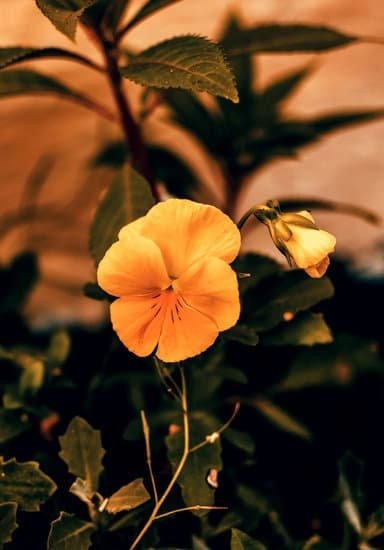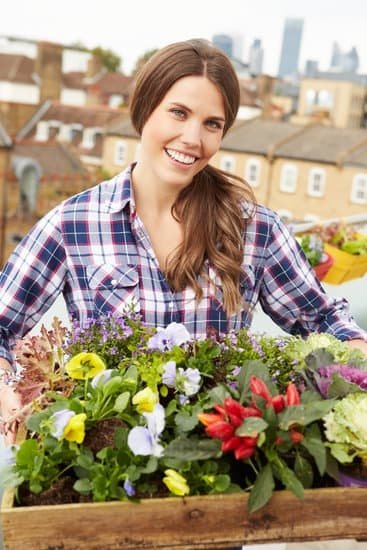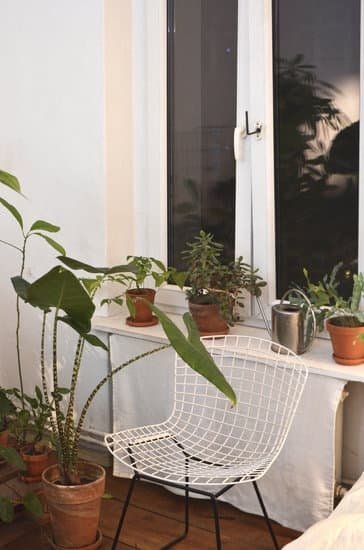Are you looking for some gardening plants ideas to elevate the beauty of your outdoor space? Gardening plants are a wonderful way to bring color, fragrance, and life to your garden.
From selecting the right plants to caring for them and exploring creative design ideas, there are endless possibilities to enhance your garden. In this article, we will delve into the art of gardening plants and provide you with valuable tips and techniques to create a stunning garden that you can be proud of.
When it comes to creating a beautiful garden, one of the first steps is choosing the perfect location. The right location can make all the difference in the growth and health of your plants. From there, selecting the right plants for your garden space is crucial.
Whether you have limited space or plenty of room to work with, there are suitable plants for every type of garden. Caring for your gardening plants is also essential in ensuring they thrive and flourish.
In addition to providing aesthetic appeal, gardening plants offer a range of benefits for mental and physical health. Studies have shown that spending time in nature and tending to plants can reduce stress, improve mood, and increase physical activity.
As we explore these benefits further along with incorporating edible plants into your garden and innovative ways to display potted plants, you will discover endless opportunities to embrace the joy of gardening plants. Let’s dive into this fascinating world full of beauty and serenity.
Choosing the Perfect Location for Your Garden
Selecting the right location for your garden is crucial to the success of your gardening plants. The ideal spot should have access to sunlight for at least 6 hours a day, be close to a water source, and have good soil drainage. Before starting your garden, it’s essential to evaluate different areas of your outdoor space to determine which location meets these criteria.
When choosing the perfect location for your garden, consider the type of plants you want to grow. For example, if you’re planning to grow vegetables or herbs, make sure the chosen spot receives ample sunlight throughout the day. On the other hand, if you’re interested in growing shade-loving plants such as ferns or hostas, look for an area that is sheltered from direct sunlight.
It’s also important to take into account any potential barriers in the chosen location such as trees or structures that may obstruct sunlight. Keep in mind that different plants have varying light and space requirements, so it’s essential to tailor your garden’s location accordingly. By carefully selecting the right location for your garden, you can ensure that your gardening plants will thrive and flourish.
| Aspect | Consideration |
|---|---|
| Sunlight | At least 6 hours a day |
| Water Source | Close proximity |
| Soil Drainage | Good drainage |
Selecting the Right Plants for Your Garden Space
When it comes to selecting the right plants for your garden space, there are a few factors to consider. The climate of your region, the amount of sunlight your garden receives, and the soil type are all crucial elements that will influence your plant selection. Here are some tips for choosing the best plants for your gardening space:
- Consider the climate: Different plants thrive in different climates, so it’s important to choose plants that are suitable for the weather conditions in your area. Research which plants are native to your region and which ones will thrive in your specific climate.
- Assess sunlight levels: Take note of how much sunlight your garden receives throughout the day. Some plants require full sun, while others prefer partial or full shade. Be mindful of this when selecting plants for your garden space.
- Soil type: The type of soil in your garden will also impact the types of plants you can grow. Some plants do well in well-draining sandy soil, while others prefer rich, moist loam. Consider getting a soil test done to determine the pH level and nutrient content of your soil.
By taking these factors into account, you can ensure that you choose the right plants for your gardening space. Whether you’re interested in growing flowers, vegetables, herbs, or shrubs, a thoughtful approach to plant selection will set you up for success in creating a thriving and beautiful garden.
In addition to considering these practical elements, also think about the overall aesthetic and theme you want to achieve with your garden. Do you want a wildflower meadow look? A formal English garden? Or perhaps a modern minimalist design? These preferences can help guide you in selecting the perfect combination of gardening plants ideas for your outdoor space.
Tips for Caring for Your Gardening Plants
Caring for your gardening plants is essential to ensure they thrive and remain healthy. Whether you are a novice or an experienced gardener, proper plant care is crucial to the success of your garden. Here are some tips to help you maintain your gardening plants and keep them looking beautiful year-round.
Watering
Proper watering is key to keeping your gardening plants healthy. Different plants have different water needs, so it’s important to research each plant’s specific requirements. Overwatering can lead to root rot, while underwatering can cause wilting and stunted growth. Consider investing in a drip irrigation system or a soaker hose to ensure that your plants receive consistent moisture.
Fertilizing
Fertilizing your gardening plants is important for providing essential nutrients for growth and flowering. Choose a fertilizer that is suitable for the specific needs of your plants, whether they require more nitrogen for leafy growth or phosphorus for flower production. Consider using organic fertilizers to promote long-term soil health and reduce the risk of chemical buildup.
Pruning
Regular pruning helps maintain the shape and health of your gardening plants. Remove dead or damaged branches, as well as any overgrown or crossing stems. Pruning also encourages new growth and flowering in many plant species. Be sure to use clean, sharp pruning tools to minimize the risk of disease transmission between plants.
By following these tips for caring for your gardening plants, you can help ensure that they thrive and contribute to the beauty of your garden space. Taking the time to properly care for your plants will pay off with stunning foliage, vibrant blooms, and a lush garden environment that you can enjoy throughout the year.
Creative Design Ideas for Arranging Plants in Your Garden
When it comes to designing and arranging plants in your garden, the possibilities are endless. Whether you have a small urban garden or a spacious backyard, there are creative ways to arrange your gardening plants to maximize their aesthetic appeal. Here are some ideas to inspire your garden design:
- Create a focal point: Consider placing tall plants or a stunning sculpture at the center of your garden to create a focal point that draws the eye. Surround this focal point with lower-growing plants to enhance the visual impact.
- Utilize different textures and colors: Mix and match plants with varying leaf shapes, sizes, and colors to add visual interest to your garden. For example, pair delicate ferns with bold, broad-leafed hostas for a striking contrast.
- Use containers and raised beds: If you’re short on space or want to add dimension to your garden, consider using containers or raised beds to showcase your plants. This allows you to easily move and rearrange your plants as needed.
Incorporating these design ideas into your gardening space will not only enhance the beauty of your outdoor area but also provide a sense of tranquility and harmony. Experimenting with different arrangements can help you discover new ways to showcase the natural beauty of your gardening plants.
Remember that while aesthetics are important, it’s also crucial to consider practical aspects such as sunlight exposure and watering needs when arranging your gardening plants. By striking a balance between form and function, you can create a well-designed garden that brings joy and inspiration every time you step outside.
The Benefits of Gardening Plants for Mental and Physical Health
Gardening has been a popular hobby for centuries, and for good reason. Not only does it allow you to create a beautiful outdoor space, but it also offers numerous benefits for your mental and physical health. From reducing stress and anxiety to providing a source of physical activity, gardening plants can have a positive impact on your overall well-being.
Mental Health Benefits
One of the main benefits of gardening plants is the positive effect it can have on your mental health. Spending time in nature and tending to your garden can help reduce stress, anxiety, and depression. The act of caring for living plants can provide a sense of purpose and accomplishment, which can be particularly beneficial for those struggling with mental health issues.
Physical Health Benefits
In addition to the mental health benefits, gardening plants also offer various advantages for your physical health. The physical activity involved in gardening, such as digging, planting, and weeding, can contribute to improved strength, flexibility, and endurance. Furthermore, spending time outdoors exposes you to sunlight, which is a natural source of Vitamin D essential for bone health.
Social Benefits
Beyond the individual benefits, gardening plants can also provide opportunities for social interaction. Whether it’s joining a community garden or simply sharing advice with fellow gardeners, cultivating plants can be an excellent way to connect with others who share similar interests. This social aspect can contribute greatly to overall well-being and create a sense of community among individuals with a passion for gardening plants.
With all these incredible benefits for both mental and physical health, it’s clear that gardening plants isn’t just about creating a visually appealing outdoor space; it’s also about nurturing your own well-being. Incorporating different types of plants into your garden not only adds variety but also provides an opportunity to experience the multiple advantages associated with tending to them.
How to Incorporate Edible Plants Into Your Garden
Edible plants can make a valuable addition to your garden, providing both aesthetic beauty and practical use. When considering how to incorporate edible plants into your garden, it is important to choose varieties that are well-suited to your climate and growing conditions. Additionally, it is essential to ensure that the location you select for planting these edible plants receives adequate sunlight and has fertile, well-drained soil.
One popular way to incorporate edible plants into your garden is by creating a dedicated vegetable or herb garden. Raised beds or container gardening are great options for growing vegetables such as tomatoes, peppers, and lettuce. For herbs like basil, oregano, and mint, consider planting them in smaller pots near your kitchen for easy access when cooking.
Another creative way to include edible plants in your garden is by interspersing them with ornamental plants. This not only adds visual interest but also ensures that you have access to fresh produce right outside your door. For example, planting Swiss chard alongside flowering perennials not only adds color but also provides a nutritious leafy green for cooking.
Incorporating edible plants into your garden not only enhances its appeal but also allows for sustainable living by reducing grocery expenses. Whether you have a spacious backyard or a small balcony, there are numerous ways to integrate both ornamental and edible plants into your outdoor space.
| Edible Plant | Best Growing Conditions |
|---|---|
| Tomatoes | Full sun; well-drained soil |
| Basil | Partial sun; moist, well-drained soil |
| Lettuce | Partial shade; rich, moist soil |
Innovative Ways to Display Potted Plants in Your Outdoor Space
When it comes to displaying potted plants in your outdoor space, the options are endless. One creative idea is to use an old ladder as a plant stand. Simply place potted plants on each step of the ladder, starting with larger plants at the bottom and working up to smaller ones at the top. This unique display adds visual interest while also maximizing space.
Another innovative way to showcase potted plants is by using hanging planters. Whether you opt for macramé hangers or metal hooks, hanging planters can add a touch of elegance to any outdoor area. Consider placing them along a fence, on a pergola, or even from tree branches to create a breathtaking display.
For those looking to add a whimsical touch to their outdoor space, repurposing everyday items into plant containers is a fun and eco-friendly option. Old boots, tin cans, and vintage teapots can be transformed into charming planters that bring character to your garden. Get creative and let your imagination run wild when sourcing unique containers for your potted plants.
By incorporating these innovative ways to display your potted plants in your outdoor space, you can elevate the beauty of your garden while expressing your personal style through creative design choices. These ideas not only add visual appeal but also contribute to making gardening an enjoyable and rewarding activity.
Conclusion
In conclusion, gardening plants is a wonderful way to connect with nature and add beauty to your outdoor space. Whether you have a small balcony or a large backyard, there are endless possibilities for creating a thriving garden. By choosing the right location, selecting the perfect plants, and caring for them properly, you can enjoy the benefits of a lush and vibrant garden.
Gardening plants not only provides aesthetic pleasure but also offers numerous mental and physical health benefits. The act of tending to your garden can be incredibly therapeutic, reducing stress and improving overall well-being. Additionally, being surrounded by greenery can enhance air quality and provide opportunities for physical activity.
Furthermore, incorporating edible plants into your garden can add another layer of enjoyment as you reap the rewards of your hard work in the form of delicious fruits, vegetables, and herbs. With some creative design ideas and innovative ways to display potted plants in your outdoor space, you can truly embrace the joy of gardening plants and create a haven of natural beauty right outside your door.
So grab your gardening tools and get started on transforming your outdoor space into a green oasis.
Frequently Asked Questions
Which Plant Is Best for Gardening?
The best plant for gardening depends on various factors such as the climate, soil type, sunlight exposure, and personal preferences. Some popular choices for gardening include tomatoes, peppers, lettuce, and herbs like basil and mint.
What Is the Easiest Plant to Grow in a Garden?
If you’re new to gardening or looking for low-maintenance plants, consider starting with easy-to-grow options like marigolds, zinnias, sunflowers, or succulents. These plants are resilient and can thrive in different conditions with minimal care.
How Do I Arrange My Garden Plants?
When arranging your garden plants, consider their sunlight and water requirements to ensure they are placed in suitable spots. You can create visual interest by mixing plant heights and colors while also allowing enough space for each plant to grow. Additionally, consider the growth patterns of each plant to prevent overcrowding as they mature.

Welcome to my gardening blog! I am passionate about plants and enjoy sharing my knowledge and experiences with others. In this blog, I will write about everything related to gardening, from tips on how to get started to updates on my own garden projects.





